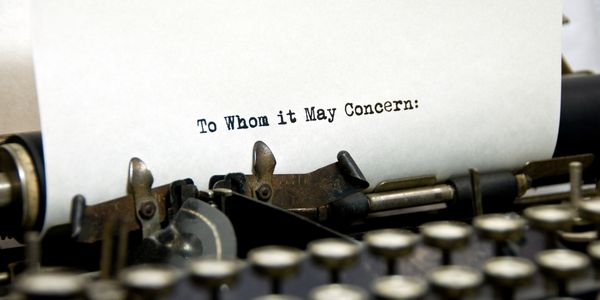 Using the salutation “To Whom It May Concern” in a letter? Before drafting one, here is everything you must know. Continue reading!
Using the salutation “To Whom It May Concern” in a letter? Before drafting one, here is everything you must know. Continue reading!
What is “To Whom It May Concern”?
We all know that “To Whom It May Concern” is a commonly used salutation or opening phrase in business letters, emails, or other formal correspondences when the recipient is not known or is irrelevant. Not just this, but this phrase is often used to address a third party who is expected to receive the communication, but whose name and contact information are not readily available or known. It is a formal way of addressing the reader, often used in cover letters, job applications, reference letters, or other formal documents.
For instance, if you are writing a reference letter for someone, but you do not know the name of the person who will be reviewing the letter, you might begin with “To Whom It May Concern” as a generic way to address the reader so that the reader is able to relate and understand that you are referring to them.
When to Use To Whom It May Concern?
Now that you know the detailed meaning of this salutation. Let us now understand, when to use it. “To Whom It May Concern” is typically used in formal business correspondence or letters when the recipient of the letter is unknown, or the sender does not have a specific person to address the letter to. Not just this, but it can also be used in recommendation letters or reference letters where the intended audience could be potential employers or institutions.
Alternatives that can be used for to Whom It May Concern
There are several alternatives that can be used instead of “To Whom It May Concern” when addressing a letter or email to someone whose name is not known. Here are some options that can be used:
- Dear Sir/Madam: This is the most formal way that can be used when the name or gender of the recipient is unknown or when the communication is for a specific department or organization.
- Dear Hiring Manager: This is the most commonly used alternative for cover letters or job application emails especially when the name of the hiring manager is unknown.
- Dear [specific department] Team: If you are aware of the recipient’s job title or position, you can use it in place of “To Whom It May Concern.” For example, “Dear Human Resources Director” or “Dear Customer Service Manager.” But do make sure, that you are aware of the correct job title or position.
- Dear [specific job title]: If you know the name of the person you’re writing to, it’s always best to use it. This shows that you’ve taken the time to personalize the communication and can help establish a more personal connection.
- Dear [specific company or organization]/Greetings: This is a neutral and inclusive salutation that can be used when you’re unsure of the recipient’s name or gender, or when you want to address a group of people. This is the safest one to be used in such a situation.
Whenever possible, it is always best to try to address the letter or email to a specific person by doing some research or making a phone call to the organization. This can help personalize the communication and show that you have made an effort to understand who you are addressing.
Also Read: 10 Video Interview Tips for Success
Tips for Writing an Effective “To Whom It May Concern”
Ideally, To Whom It May Concern should ideally be avoided now as it has become obsolete and is considered stuffy now. Here are the top 6 tips you must keep in mind while using it in your letter.
- Use a specific subject line: It is very important to start the letter with a clear and concise subject line that indicates the purpose of the letter. This will help the recipient understand the main content of the letter before reading it.
- Research the recipient: Try to find out the name of the recipient if possible. Do some research on different platforms. This will make the letter more personal and show that you have put in the effort to address the person directly. If you can’t find a name, then try to identify the appropriate title or department.
- Be professional and polite: Always use a professional tone and avoid using slang or informal language. Make sure to use proper salutations and sign off with a polite closing such as “Sincerely” or “Thank you for your attention”.
- Provide relevant information: Make sure to provide all the relevant information the recipient may need to understand the purpose of the letter. This can include background information, details about the request, or any relevant attachments or documents.
- Keep it simple: Try to keep the letter brief and to the point. Avoid including any irrelevant information. The recipient will appreciate a clear and concise letter.
- Always proofread: Before sending the letter, make sure to proofread and check it carefully for any errors or typos. Ask someone else to review it, if possible, as a fresh set of eyes can often catch mistakes you may have missed.
If you start a letter with “To Whom It May Concern,” make sure it’s in the right setting and that the letter is well written. To be sure you’re doing things correctly, you can use the advice and tips written in this post.

























